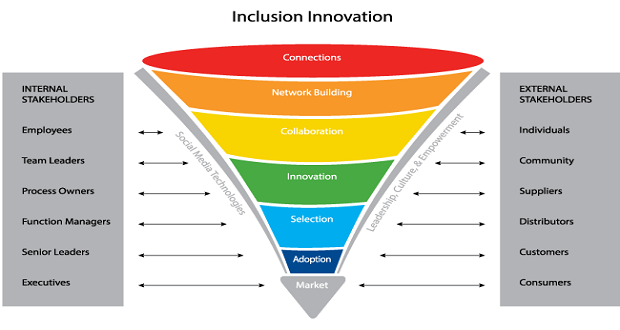
One of the main professional associations in my field of career development is the National Association of Colleges and Employers (NACE). Among other things, NACE sets the career competencies referenced by career services offices across the country. These competencies underwent some edits last year, with language being streamlined (i.e., Critical Thinking/Problem Solving became Critical Thinking) and with specific definitions being added. The addition of specific definitions has been very helpful in making our work more equitable, as it trims down on space for ambiguity and subjective interpretation of terms.
Despite these updates, though, there is still one career readiness competency that I struggle with: professionalism. A growing number of career advisors, leadership coaches, and others, are beginning to wrestle with the complexities of professionalism, from “The Problem with Professionalism” by Tami Jackson to LinkedIn’s #IAmProfessional campaign to litigator and educator Leah Goodridge’s article “Professionalism as a Racial Construct” in the UCLA Law Review. Even at the annual conference for NACE itself and its regional affiliates like my own Mountain Pacific Association of Colleges and Employers (MPACE), critical engagement with professionalism has become more common through sessions like “A Workplace Without Professionalism: Inclusion and the Future of Work Culture” and “The Modern Professional ‐ Redefining How We Talk to Students About Professionalism.” Often, these conversations situate professionalism in opposition to authenticity, with the goal being “showing up as your whole self.”
The fact remains, however, that there are standards I (and the student employee supervisors I support) would like people to maintain in the workplace. For me, they have less to do with suit-and-tie outfits or showing up five minutes early, and more to do with accountability to community and respecting coworkers’ needs and boundaries. I want my coworkers to be self-aware, communicate with me as needed, bring their ideas and listen to others, and make workplace decisions based on shared values.
As I list these components out, though, I recognize them: they are all the other career readiness competencies. They are career and self-development, communication, critical thinking, equity and inclusion, leadership, teamwork, and (to some extent) technology. Professionalism, then, seems to me more a culmination than an attribute. It is more a summary than a skill – unless we are still emphasizing culturally-specific and often unattainable aspects like (gender binary-coded, European style, expensive) clothing and (white, upper-middle class, neurotypical) communication styles.
Professionalism seems more a summary than a skill – unless we are still emphasizing culturally-specific aspects like (gender binary-coded) clothing and (white, upper-middle class, neurotypical) communication styles. Share on XIs there still a place, then, for professionalism? Honestly, after lots of moral wrangling, I have to say no. I feel strongly that there is a place for teaching about professionalism, in the same way that there is a place for teaching about the U.S. immigration system. In both cases, the system in place is deeply imperfect but can cause great harm to people who don’t have the knowledge to navigate it if needed. As coworkers and students alike have heard me say many times, we live in the world, so we need to know how to get through it while also building toward better. I want my students and those I supervise to have the tools to identify workplace norms and be able to choose, as much as possible, which they will and won’t abide by.
There is a place for teaching about professionalism, just like teaching about the U.S. immigration system. In both cases, the system is imperfect but can cause harm to people who don’t know how to navigate it. Share on XBut for those of us who set workplace norms, I don’t see a strong case for continuing to try to rehabilitate professionalism. As Dr. D-L Stewart wrote of inequality in U.S. higher education, “there are inherent problems that we cannot rethink our way around.” Professionalism itself rests upon assumptions of homogeneity as workplace success, and superficial changes to allowances may not have lasting effects. Just adding “visible tattoos” to the list of things that are allowed does not change the fact that there is a list, and one written by those who hold power in the workplace.
Just adding 'visible tattoos' to the list of things that are allowed does not change the fact that there is a list, and one written by those who hold power in the workplace. Share on XInstead, I would suggest that we start with our goals, say what we mean, and be transparent. Rather than starting with the thin-stretched concept of professionalism, let’s try starting from what is necessary in order to achieve our workplace goals, then work backward to which behaviors will enable those goals. There are challenges to being specific about those behaviors: the balance of specificity and inclusion is a fine one that never arrives at perfection. However, specificity (paired with a flexible humanity) is a gift to those of us who are new to a workplace or the first in our communities to enter a certain field. Even I, a cisgender white woman with an advanced degree, have stressed over many first days of work: what to wear? Where to park? Should I bring a lunch? Finally, transparency about reasoning for required behaviors helps mitigate the power imbalance that makes professionalism itself untenable.
If we do stop pouring energy into rehabilitating the concept of professionalism, who knows what else we could construct with that time and energy? In the space created, we can experiment together, across lines of positional power, in creating something new.
If we stop pouring energy into rehabilitating professionalism, who knows what we could construct instead? In the space created, we can experiment together, across lines of positional power, in creating something new. Share on X

















Thank you so much Elise for your terrific article on professionalism. I frequently counsel managers and leaders not to use that word when they describe “expectations” in the work environment. Rather, as you point out, agreeing with an employee on her goals, accompanied with a deliberate enumeration of behaviors needed to achieve the goal, is to me a better way. I’ve often seen managers and leaders, over my years in large organizations, use “professionalism” as a stick to poke people with. That’s not acceptable. Again, thank you! Artell Smith